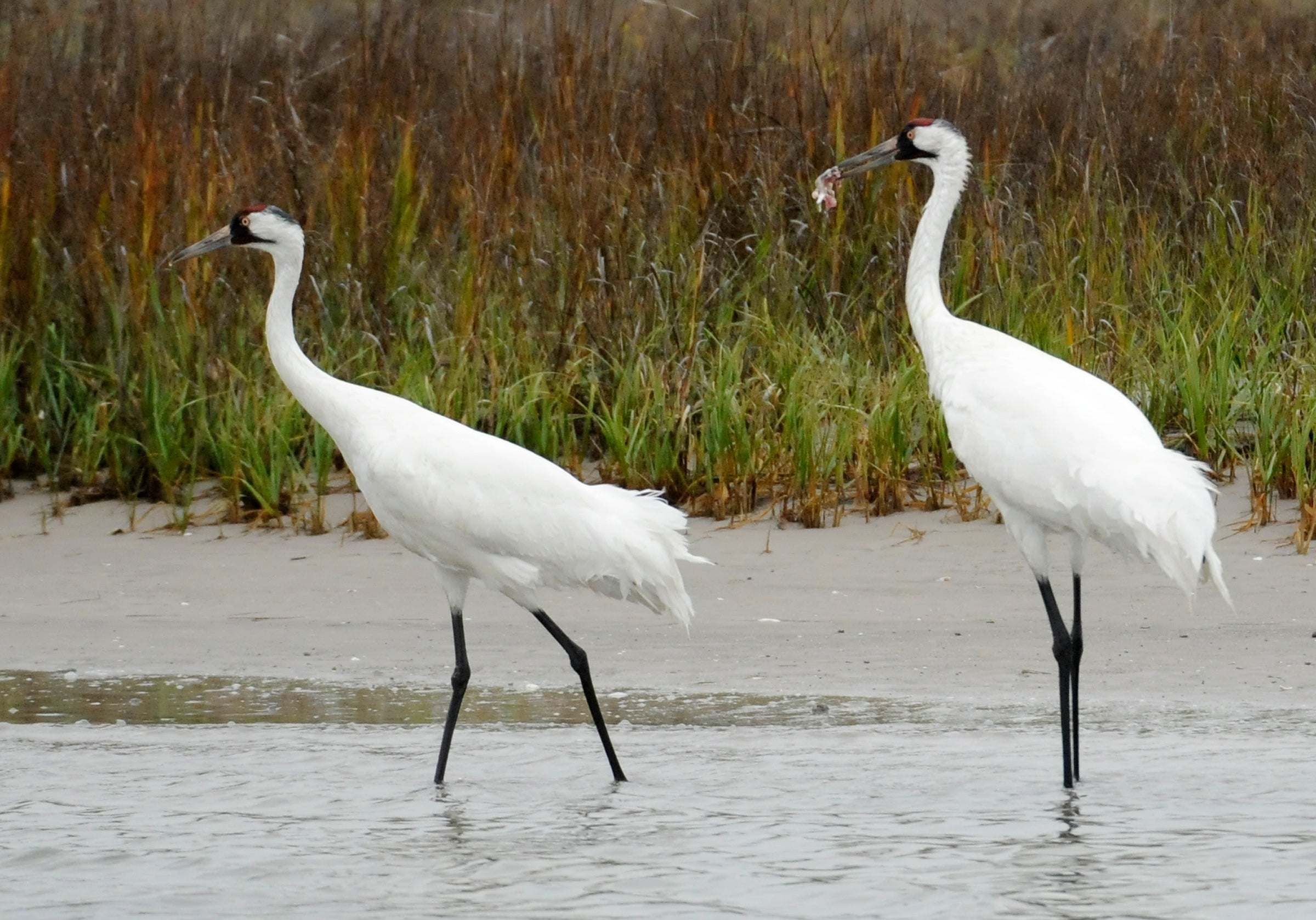Virus outbreak cancels whooping crane count in Texas
The coronavirus outbreak has canceled this year's flights to count the world's rarest cranes in their only natural flock

Your support helps us to tell the story
From reproductive rights to climate change to Big Tech, The Independent is on the ground when the story is developing. Whether it's investigating the financials of Elon Musk's pro-Trump PAC or producing our latest documentary, 'The A Word', which shines a light on the American women fighting for reproductive rights, we know how important it is to parse out the facts from the messaging.
At such a critical moment in US history, we need reporters on the ground. Your donation allows us to keep sending journalists to speak to both sides of the story.
The Independent is trusted by Americans across the entire political spectrum. And unlike many other quality news outlets, we choose not to lock Americans out of our reporting and analysis with paywalls. We believe quality journalism should be available to everyone, paid for by those who can afford it.
Your support makes all the difference.The coronavirus pandemic has canceled this year’s flights to count the only natural flock of whooping cranes — the first time in 71 years that crews in Texas couldn't make an aerial survey of the world’s rarest cranes
The U.S. Fish and Wildlife Service has records of such surveys for every year starting in 1950, Wade Harrell, whooping crane recovery coordinator for the U.S. Fish and Wildlife Service, said in an email Wednesday.
The flock breeds in Canada and winters on and around Aransas National Wildlife Refuge in Texas, where the survey is made.
Current protocols call for about six flights, each with a pilot and at least two observers — all of whom often come from different parts of the country — in the close quarters of a small plane, Harrell said.
"We decided to forgo the aerial survey this winter with COVID-19 cases currently spiking," he said in a news release last week.
At 5 feet (1.5 meters) high from their black feet to the little red caps on their heads, whooping cranes are the tallest birds in North America. They’re white with black wingtips, and their wingspan, at more than 7 feet (2.1 meters), is wider than a full-sized pickup truck. They mate for life.
Only about 825 exist — most of them in the natural flock, which is also the only one that doesn’t need human help to keep its numbers up. Habitat loss and hunting had cut that flock to 15 in 1941.
It's disappointing not to have the survey because people look forward to learning about each year's population increase, Liz Smith national program director for the International Crane Foundation, said in a phone interview Wednesday. The pandemic also kept Wood Buffalo National Park in Canada from making its usual count.
The Fish and Wildlife Service and state and conservation groups have been working for decades to build up two other flocks as a hedge against disease, storm or other damage to the Canada-Texas flock.
In addition to birds kept in captivity for breeding, there are about 85 birds in a flock taught to migrate by following ultralight planes from Wisconsin to Florida, starting in 2001. A nonmigratory flock begun in 2011 in southwest Louisiana has 75.
Youngsters raised in captivity have been added to those flocks every year until last year. There was “basically no” captive breeding in 2020 because of pandemic restrictions, so juveniles could not be added to either flock, said Sara Zimorski, a biologist with Louisiana's Department of Wildlife and Fisheries.
Missing one year of the survey won’t significantly damage the federal agency's ability to monitor trends, Harrell and Smith agreed.
“What we do need to know is how well the cranes are doing on their winter landscape in Texas, and whether birds that are marked have arrived at their wintering grounds,” Smith said.
“Citizen scientists" have long helped track whooping cranes through the Texas Parks and Wildlife Department’s Texas Whooper Watch program, the federal agency said. High-quality photos of banded whooping cranes can also be uploaded, with information about when and where they were taken, to track them through a new online form on the foundation's website.
Smith said she photographed a bird at the Aransas refuge with a small aluminum band, indicating that the U.S. Fish and Wildlife Service had tagged it during a drive in the 1970s and 1980s.
The whooping crane was probably at least 38 years old, she said.
Smith said the cranes often live about 24 years in the wild but birds that old are rare.
“Documenting this grand Whooping Crane again was so inspiring and also informative of the recovery potential of this species," she wrote in an email Wednesday.